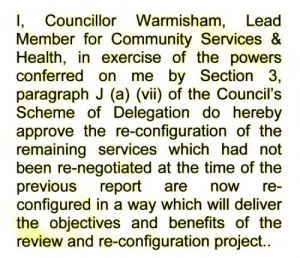I’ve had some great gigs and I’ve had some terrible gigs.
One of the best I ever had was as the Solutions Architect for the Custom Services Unit of the now absorbed Compaq Computer Corporation.
In that role, my job was to work with our Sales Teams to engage with clients, understand their businesses, and work with them to determine how we could best help them to achieve their goals. Our clients were an unusual stew of small businesses, start-ups, and a few smaller government customers that had been experiencing uncharacteristically un-governmental, sweeping dynamic change.
Really, from the point of view of an alpha propeller-head, it was nearly perfect little world.
I would talk to customers to understand where their organizations were and were they were going. We would identify and prioritize their most pressing information challenges. They would tell me what technical capabilities they had and what kind of budgets they could bring to bear to address the problems. With this conversation, I could then provide them access to the technical assistance and solutions they needed and could not easily provide for themselves.
Lots of people would look at this as some sort of driving to get the order, and those folks would see a stressful, goal oriented process. For me, though, it was working together, actively listening, and letting your customer tell you where they thought they needed help.
After one of these conversations, I would go back to my home office and write up my notes into a statement of work. I’d identify the different resources it might take to deliver the project, and develop some resource estimates and a commercial structure. If the job was going to take hardware or software to complete, I would put together a bill of materials with servers, storage and networking gear that Compaq sold. I’d head back to the client’s and review the contract in detail with them. I don’t recall ever writing one up where I didn’t get the go ahead to deliver the service.
So we’d sign the statement of work, shake hands, and I’d pull my Aerostich on over my business clothes and ride my motorcycle back home. My business suit would go back on its hangar in the closet, and the next morning I’d pull on a pair of jeans and an oxford cloth shirt, put my tools in my laptop bag, and ride back to my client’s place and start to build the stuff I’d sold the day before.
It is the easiest thing in the world to make promises when you know you will be the one keeping them.
It sounds simple, but it really isn’t.
Say exactly what you mean. Mean what you say. And follow though and do what you said you would do.
My customers understood that that was the deal – that they weren’t likely to have to appeal to some disengaged Account Manager that didn’t really have any skin in the game. I’d said I’d take care of it, and even though I always had support from specialist members of my team – Network, Storage and Messaging System pros – they knew that in the end I would make sure that they got what I’d committed to.
Now not every IT Service engagement is that simple.
They should be, though.
I’ll admit that my case – where I was the salesman, consultant, architect, Project Manager and service delivery resource – is an unusual, best-case scenario that borders on some sort of IT Nerd Elysium.
When you engage with an Information Technology service provider, you’ll be dealing with at least those half a dozen people, as well as their internal legal, finance and management teams. Every additional participant in that process tends to make the entire journey slower, longer, less agile, more cumbersome and harder to understand, and ultimately, to manage to success.
My Compaq Statements of Work used to average between two and a half and four pages. Nobody had any questions about what was being described and what work would be performed. Since then, I’ve seen contract documents that looked like the Manhattan phone book, and whose content required a legal team and an accountant to untangle, and even then your entire team might not agree on exactly what was being said.
When you go to the market, clarity, transparency and simplicity are what you should demand. Service Providers that comport themselves in this manner are putting themselves in your – the client’s – shoes, not hiding behind language and instruments whose jobs are to obscure and obfuscate what you’re getting for your money. Information Technology has become so complex and the commercial stakes are so high that going it alone is no longer a viable option.
If what your IT Provider is saying isn’t absolutely clear to you, you need to find another provider.


Pingback: The Fact-Free Universe | Ouroboros